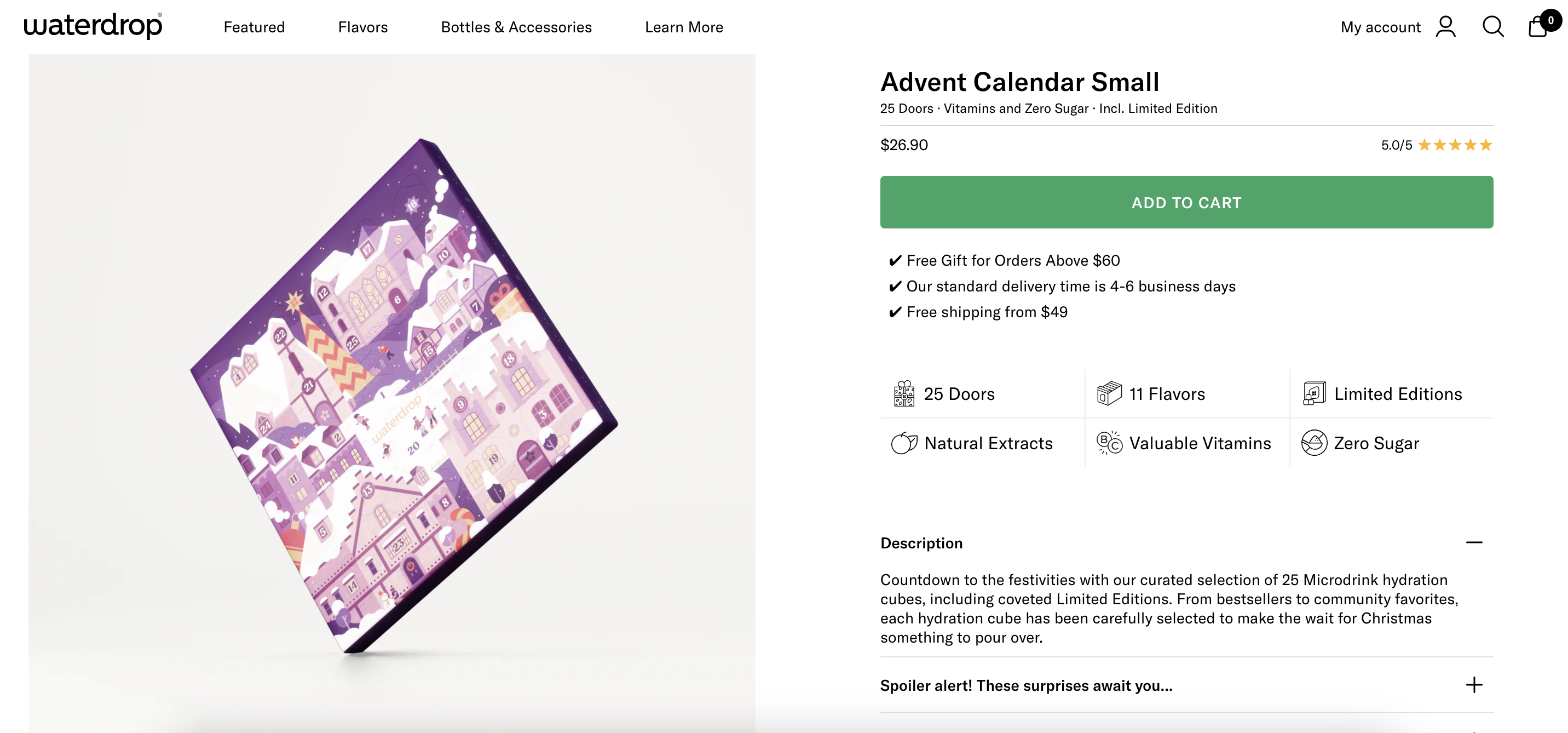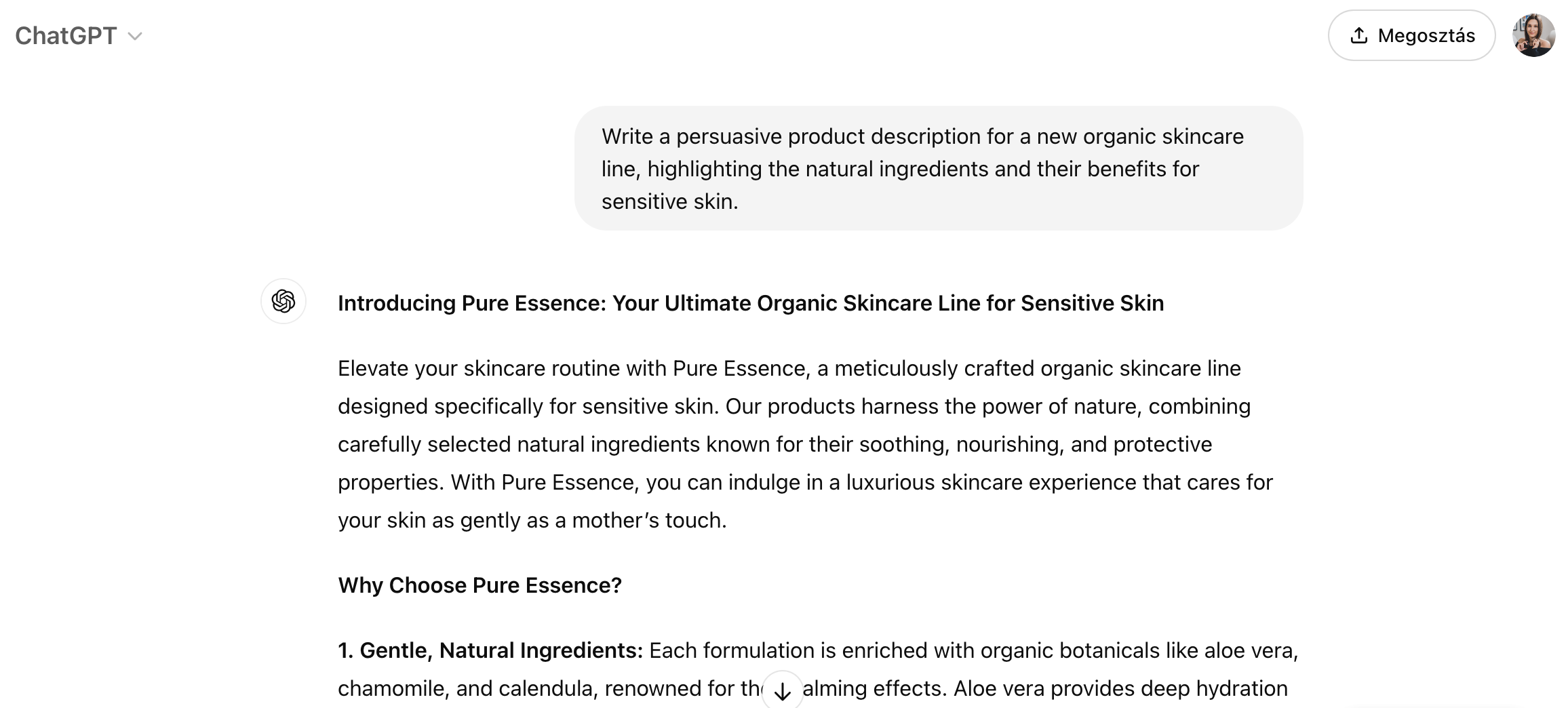- Blog
- How to Write Copy That Converts: 10 Tips for Engaging Website Visitors
How to Write Copy That Converts: 10 Tips for Engaging Website Visitors
-
Nikolett Lorincz
- Conversion
- 6 min read
Table of Contents
Crafting copy that actually converts isn’t just about writing something catchy—it’s about knowing exactly what your target audience needs and delivering it in a way that compels them to take action.
In a crowded digital landscape, your copy has a short window to hook readers, gain their trust, and inspire them to click, sign up, or buy, ultimately boosting conversion rates.
In this article, we’ll dive into ten powerful strategies that can help you create compelling copy that turns casual website visitors into loyal customers.
Let’s get started!
What is conversion copywriting?
Conversion copywriting is an effective conversion rate optimization tactic that helps with writing copy that nudges your audience toward a specific action.
Whether it’s signing up for a newsletter, downloading an ebook, or hitting “Buy Now,” conversion copy is designed to inspire action.
It’s not about being clever for the sake of it. Instead, it’s about creating a clear path to a goal, addressing the reader’s needs, and communicating value in a way that’s both persuasive and authentic.
10 tips to write copy that converts
Now that we understand the power of website copywriting, let’s dive into ten actionable tips to help you write copy that not only captures attention but turns readers into loyal customers.
1. Address your target audience’s pain points
To truly engage visitors, you need to speak directly to their pain points.
Start by building detailed buyer personas that represent your ideal customers—this includes their goals, fears, challenges, and what drives them. Once you understand what makes them tick, tailor your copy to address these specific issues.
If you’re selling a project management tool, for example, you might address the frustration of missed deadlines or poor team communication.
The more you connect your solution to their problems, the more relevant and compelling your message will be.
2. Grab attention with power words
Your headline is often the first (and sometimes only) thing a visitor reads, so make it count.
Use “power words” that evoke emotion and intrigue—words like “proven,” “secret,” “essential,” or “discover.”
The goal is to spark curiosity or urgency, so readers feel compelled to keep reading. But remember, clarity is key: the headline should hint at what readers can expect, not leave them guessing.
A headline like “The Secret to Stress-Free Project Management” is both intriguing and clear.
3. Add a clear value proposition
Visitors should understand the value of your offering within seconds. This means communicating, in simple terms, how your product or service benefits them and what sets it apart.
Instead of a generic statement like “We offer the best service,” go for something specific like “Save 20% more time each day with our automation tools.”
Direct, easy-to-understand language is crucial. When visitors quickly see what’s in it for them, they’re more likely to stay engaged.
This is especially crucial for a business owner looking to stand out in a competitive market.
4. Use strong, active language
Active language creates momentum, encouraging readers to act.
Compare “The software was designed to streamline work” with “Streamline your workflow instantly with our software.” The active voice is clear and engaging, leaving little room for hesitation.
Try using strong verbs like “discover,” “boost,” or “transform” to add energy to your copy. Every word should have a purpose and propel the reader toward action.
5. Create urgency and excitement
Creating a sense of urgency can prompt readers to act quickly, but it’s essential that it feels genuine, not forced.
Phrases like “limited time deal” or “only a few spots left,” as Amazon frequently uses, create a sense of exclusivity and give visitors the final push to take action sooner rather than later.

The key is to balance excitement with credibility. For instance, instead of “Buy now before it’s gone!” a more authentic approach might be, “Our early-bird spots are filling up fast—reserve yours today to save 25%.”
6. Speak to emotions, not just logic
While logic is important, emotion is often the real motivator behind buying decisions. To tap into this, incorporate storytelling elements into your copy. Instead of only listing features, link them to a desired outcome.
For example, Mott & Bow doesn’t just describe the quality of their jeans—they tap into the frustration of finding a comfortable, stylish pair and position their jeans as the solution for feeling confident and comfortable every day.

Great copywriters often speak to emotions so that the copy becomes relatable, memorable, and more likely to inspire action.
7. Make it scannable
People don’t read web content like they do a novel—they scan.
To make your copy easy to read and digest, break it up with subheadings, bullet points, and short paragraphs. Use visuals like images, icons, or infographics to reinforce key points and make the page more visually appealing.
This approach is particularly effective for landing pages and product pages, which need to quickly convey key information to drive conversions.
For inspiration, check out Waterdrop’s product page, which uses a scannable layout that helps visitors quickly find the information they need.

A well-organized, easy-to-read page keeps readers engaged longer and lowers bounce rates, making them more likely to stay and take action.
8. Build trust with social proof
Social proof is essential for establishing credibility. Customer reviews, testimonials, and case studies serve as real-life validation that your product or service delivers.
Take a page from Bubble Skincare. They use specific metrics on their product page, such as “95% said it leaves skin feeling soft.” This kind of data-backed proof is both relatable and convincing.

You can also reinforce trust by adding security badges, partnership logos, or a “trusted by” section on your website. When prospective customers see others vouching for your brand, they’re more likely to believe in your product—and feel confident taking the next step.
9. Use AI to improve your conversion copywriting efforts
AI tools like ChatGPT can help refine your copy and generate multiple ideas.
If you’re stuck, prompt ChatGPT to suggest alternate headlines…

Craft persuasive product descriptions…

Or brainstorm ways to highlight your product’s unique value proposition.

By leveraging AI, you can test and optimize your copy faster, making it easier to find language that resonates best with your audience.
AI tools can also assist in SEO copywriting, ensuring your content ranks well in search engines while remaining engaging for readers.
10. Test and optimize regularly
Effective conversion copywriting isn’t a one-and-done task. Regularly A/B testing different versions of your copy allows you to learn what resonates most with visitors.
Focus on key metrics such as click-through rates, bounce rates, and time spent on the page.
Experimenting with small tweaks—like changing a CTA or adjusting the tone—can yield big improvements over time. Remember, continuous optimization is the key to keeping your copy fresh and effective.
FAQ
What is a conversion copywriter?
A conversion copywriter specializes in crafting persuasive copy designed to prompt readers to take a specific action—like clicking a link, signing up, or making a purchase. Unlike general website copywriting, which can be informative or entertaining, conversion copywriting is strategically aimed at driving results and increasing conversions. It’s about knowing the audience, understanding their motivations, and addressing their pain points to create compelling, action-oriented messaging.
How to write paid ads that convert?
Writing paid ads that convert is all about being clear, concise, and impactful. Start by identifying the most relevant pain points of your target audience and present your product or service as the solution. Use power words and an attention-grabbing headline to stand out in a busy feed. Include a clear value proposition, so viewers immediately understand what’s in it for them.
How to write a convincing copy?
Begin by getting to know your audience deeply: what they want, what challenges they face, and how your product or service can improve their lives. Use straightforward, active language, and focus on the benefits rather than just features—showing how your offering can make a real difference. Incorporate storytelling and emotional appeal, and make your copy easy to read by using short sentences, bullet points, and subheadings. Finally, use social proof like testimonials or case studies to build credibility and trust, making your copy even more persuasive.
Wrapping up
Effective copywriting is a well-known conversion optimization strategy. However, it does more than just sell. It builds trust, engages the audience, and makes them feel seen.
By focusing on the needs of your target audience, speaking to their emotions, and refining your message, you can create copy that grabs attention and drives real action.
Test, learn, and keep tweaking your conversion copy, and you’ll soon see the impact on your conversion rates. After all, the best copywriting is an evolving art, designed to connect with your audience at every stage of their journey.
Migration has never been easier
We made switching a no-brainer with our free, white-glove onboarding service so you can get started in the blink of an eye.

What should you do next?
Thanks for reading till the end. Here are 4 ways we can help you grow your business:
Boost conversions with proven use cases
Explore our Use Case Library, filled with actionable personalization examples and step-by-step guides to unlock your website's full potential. Check out Use Case Library
Create a free OptiMonk account
Create a free OptiMonk account and easily get started with popups and conversion rate optimization. Get OptiMonk free
Get advice from a CRO expert
Schedule a personalized discovery call with one of our experts to explore how OptiMonk can help you grow your business. Book a demo
Join our weekly newsletter
Real CRO insights & marketing tips. No fluff. Straight to your inbox. Subscribe now
Nikolett Lorincz
- Posted in
- Conversion
Partner with us
- © OptiMonk. All rights reserved!
- Terms of Use
- Privacy Policy
- Cookie Policy
Product updates: January Release 2025








